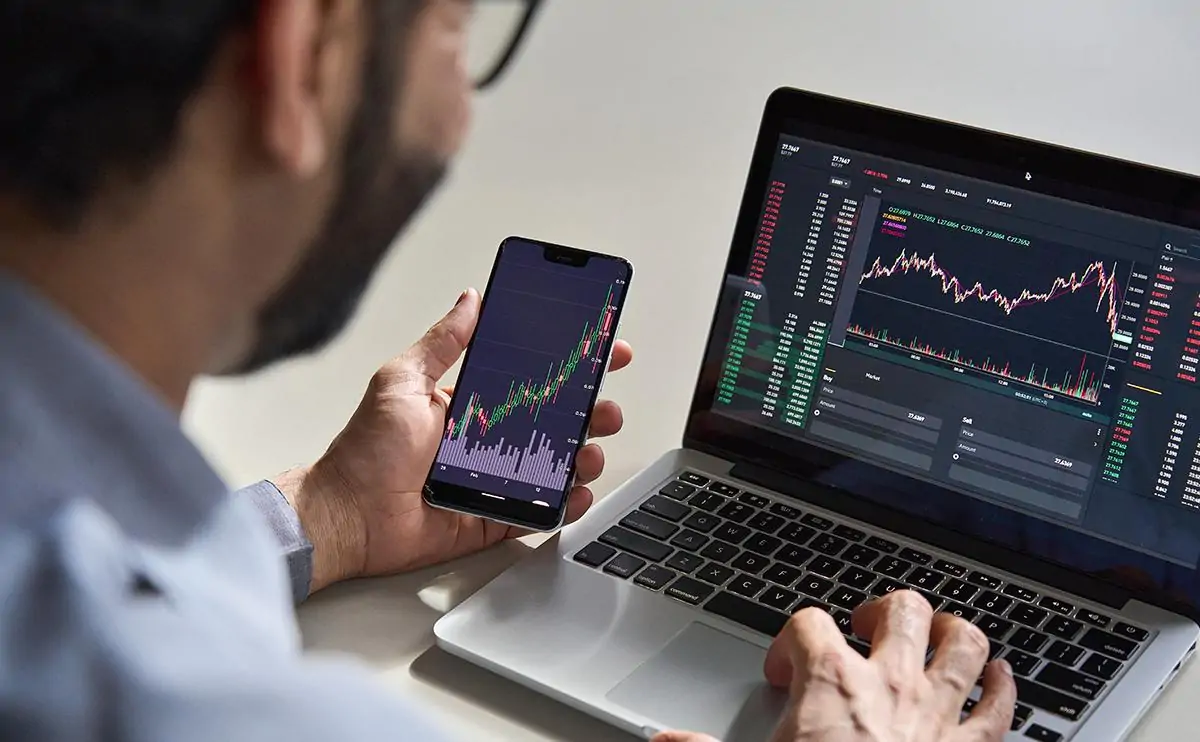Learning how to buy Bitcoin at lowest price can save you hundreds or even thousands of dollars on your cryptocurrency investments. With Bitcoin’s volatile nature and the multitude of trading platforms available, finding the best deals requires strategic planning and market knowledge.
Whether you’re a first-time investor or looking to optimize your existing Bitcoin purchasing strategy, understanding market timing, platform fees, and alternative buying methods is crucial. The difference between paying premium prices and securing Bitcoin at its lowest possible cost often comes down to patience, research, and using the right tools.
In this comprehensive guide, we’ll explore proven strategies that successful Bitcoin investors use to minimize their purchase costs while maximizing their investment potential.
Understanding Bitcoin Price Fluctuations
Bitcoin’s price changes constantly due to various market factors, including supply and demand, regulatory news, institutional adoption, and global economic conditions. These fluctuations create opportunities for savvy investors to purchase Bitcoin at significantly lower prices than market peaks.
Market volatility might seem intimidating, but it’s your greatest ally when trying to buy Bitcoin affordably. Understanding these patterns helps you identify optimal buying windows and avoid costly mistakes that novice investors often make.
Best Times to Buy Bitcoin at Lowest Price
Market Cycles and Seasonal Patterns
Historical data shows that Bitcoin often experiences predictable patterns throughout the year. Many investors notice lower prices during certain months, particularly in January and September, when traditional markets usually see corrections.
Weekend trading also tends to show different price patterns compared to weekdays. Lower trading volumes during weekends can sometimes lead to price dips, creating opportunities for strategic purchases.
Dollar-Cost Averaging Strategy
Dollar-cost averaging (DCA) is one of the most effective methods to buy Bitcoin at consistently lower average prices. Instead of making one large purchase, you spread your investment across multiple smaller purchases over time.
This strategy helps smooth out price volatility and reduces the risk of buying at a market peak. Many successful investors use automated DCA strategies to remove emotion from their purchasing decisions.
Choosing the Right Platform for Low-Cost Bitcoin Purchases

Exchange Fee Comparison
Different cryptocurrency exchanges charge varying fees for Bitcoin purchases. Some platforms charge as little as 0.1% per transaction, while others may charge 3% or more. These differences can significantly impact your total investment cost.
Consider both maker and taker fees when comparing platforms. Maker fees apply when you place limit orders that add liquidity to the order book, while taker fees apply to market orders that remove liquidity.
Peer-to-Peer Trading Platforms
Peer-to-peer (P2P) platforms often offer competitive rates because they connect buyers directly with sellers, eliminating some intermediary costs. These platforms can be beneficial for finding Bitcoin at below-market rates.
However, P2P trading requires additional caution regarding security and verification of trading partners. Always use platforms with strong escrow services and reputation systems.
Advanced Strategies for Buying Bitcoin Cheaply
Limit Orders vs Market Orders
Using limit orders instead of market orders can help you secure Bitcoin at your desired price point. While market orders execute immediately at current prices, limit orders only execute when Bitcoin reaches your specified price.
This patience-based approach often results in better purchase prices, especially during volatile market conditions when prices fluctuate rapidly throughout the day.
Arbitrage Opportunities
Price differences between exchanges create arbitrage opportunities where you can buy Bitcoin on one platform and potentially sell it for a profit on another. While this requires more active management, it can lead to acquiring Bitcoin at below-average market prices.
Monitor multiple exchanges simultaneously to identify these price discrepancies. However, factor in withdrawal fees and transfer times when calculating potential profits.
Timing Your Bitcoin Purchases
Technical Analysis Basics
Learning fundamental technical analysis can help you identify potential support levels where Bitcoin might find buying interest. Look for historical price levels where Bitcoin has previously bounced higher.
Moving averages, RSI indicators, and volume patterns can provide insights into potential buying opportunities. While technical analysis isn’t foolproof, it can improve your timing significantly.
News-Based Buying Opportunities
Negative news often creates temporary price drops that present buying opportunities for patient investors. Market overreactions to regulatory concerns or technical issues frequently resolve themselves over time.
Develop a news-monitoring strategy to stay informed about events that might impact Bitcoin prices. However, always verify information from multiple sources before making investment decisions.
Cost-Effective Bitcoin Storage Solutions

Wallet Considerations
Factor in storage costs when calculating your total Bitcoin investment. While keeping Bitcoin on exchanges is convenient, it carries security risks and may involve ongoing fees.
Hardware wallets require an upfront investment but eliminate ongoing storage fees and provide enhanced security for long-term holdings.
Common Mistakes to Avoid
Emotional Trading
Fear of missing out (FOMO) often leads to purchasing Bitcoin at price peaks. Develop a systematic approach to buying rather than making emotional decisions based on price movements.
Set clear criteria for your purchases and stick to your strategy even when market sentiment becomes extremely bullish or bearish.
Ignoring Total Costs
Many investors focus solely on Bitcoin’s price while ignoring transaction fees, withdrawal costs, and other associated expenses. Calculate your total cost per Bitcoin to make informed decisions.
Some platforms offer lower Bitcoin prices but charge higher fees, resulting in higher total costs than competitors with slightly higher Bitcoin prices but lower fees.
Also Read: Bitcoin Price Soars to $108K as Whales and Institutions Pile In
Building Your Bitcoin Buying Strategy
Setting Investment Goals
Define clear objectives for your Bitcoin investments. Are you looking for short-term gains or building a long-term position? Your goals should influence your buying strategy and timing.
Long-term investors can afford to be more patient and strategic about their purchases, while short-term traders might need to act more quickly on opportunities.
Portfolio Allocation
Determine what percentage of your investment portfolio should consist of Bitcoin. This allocation will guide how much you should invest during different market conditions.
Many financial advisors suggest limiting cryptocurrency investments to 5-10% of your total portfolio, though this varies based on individual risk tolerance and investment goals.
Conclusion
Mastering how to buy Bitcoin at the lowest price requires patience, research, and a systematic approach to the cryptocurrency market. By implementing dollar-cost averaging, using low-fee exchanges, timing your purchases strategically, and avoiding common emotional trading mistakes, you can significantly reduce your Bitcoin acquisition costs.
Remember that successful Bitcoin investing is a marathon, not a sprint. Start implementing these strategies today by choosing a reputable exchange, setting up a dollar-cost averaging plan, and staying informed about market conditions. Your future self will thank you for taking the time to buy Bitcoin at the lowest possible prices.
FAQs
Q: What’s the absolute cheapest way to buy Bitcoin?
A: The cheapest method typically involves using major exchanges with low fees (like Coinbase Pro or Binance) combined with limit orders and dollar-cost averaging to avoid timing the market poorly.
Q: Should I wait for Bitcoin to crash before buying?
A: Trying to time major market crashes is extremely difficult. Dollar-cost averaging provides a more reliable approach to securing lower average purchase prices over time.
Q: Do Bitcoin prices differ significantly between exchanges?
A: Yes, prices can vary by 1-5% between exchanges due to liquidity differences and regional factors. However, arbitrage opportunities usually close quickly in efficient markets.
Q: Is it better to buy Bitcoin during weekends?
A: Weekends sometimes show lower prices due to reduced trading volume, but this isn’t a reliable pattern. Focus on fundamental analysis and your long-term strategy rather than day-of-week timing.
Q: How much should I invest in Bitcoin at once?
A: This depends on your financial situation and risk tolerance. Many experts recommend dollar-cost averaging with smaller, regular purchases rather than investing a large sum at once.

